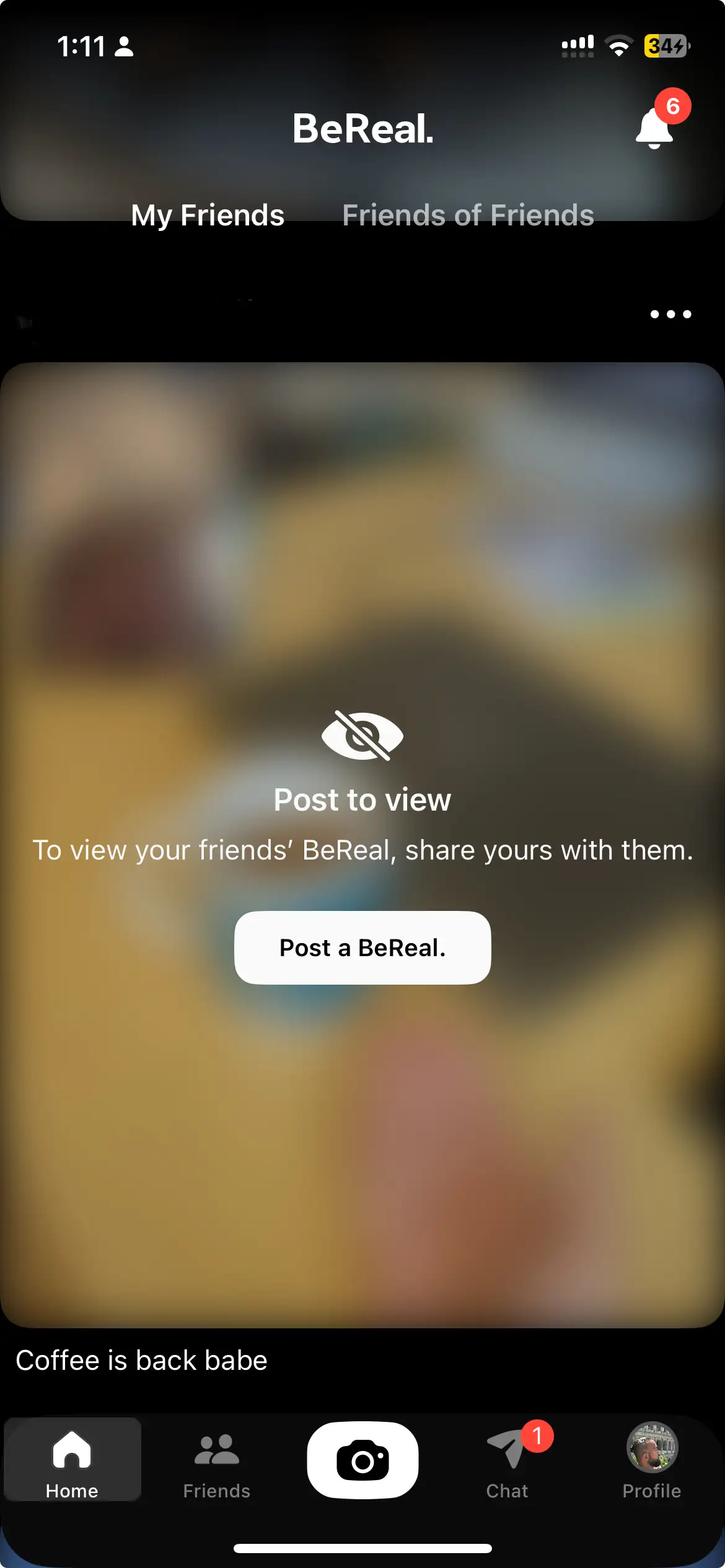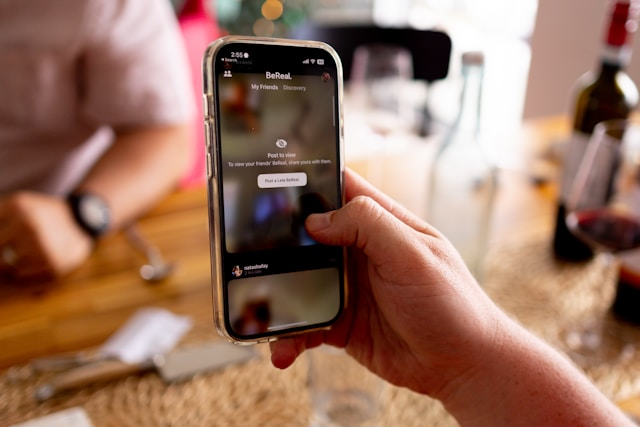university
individual
research
thematic analysis
netnography
Background
This project investigated user behaviour on BeReal, a social media app that limits users to one daily photo at a random time, framed as a push toward “authenticity.”As part of a course on social media and ethnography, I aimed to understand how users interact within BeReal’s unique structural constraints, and how identity is formed through these interactions.

Through a netnographic study, I explored BeReal as a digitally-mediated cultural space, examining the dramaturgical and symbolic processes users engaged in. Grounding the study in Goffman’s theory of Dramaturgy and Vincent Miller’s work on Symbolic Interactionism and Networked Identity, the research looked beyond the app’s surface-level design and into the social performances it facilitates.
My Role
- Designed and executed a complete netnographic study of BeReal’s user ecosystem.
- Conducted two weeks of observational tracking of six BeReal users.
- Carried out in-depth semi-structured interviews.
- Thematically analysed user comments, reactions, and interactions using a structured multi-phase coding process.
- Mapped behavioural patterns to theoretical frameworks and produced interpretive insights.
Tools
Methodology & Methods
Approach: Netnographic Research Frameworks: Goffman’s Dramaturgy, Symbolic Interactionism, Networked IdentityMethods Used:
- Digital Participant Observation
- Textual and Visual Tracking (RealMojis, post content, retake frequency)
- Semi-Structured Interviews
- Thematic Analysis (Inductive + Deductive Phases)
- Reflexive Documentation
Thematic Insights
Through digital ethnographic observation and thematic analysis, six key patterns emerged around how users express identity and navigate social interaction on BeReal. These insights reflect how platform constraints actively shape user behaviour, routines, and forms of self-presentation.- Self-Restraint: BeReal’s structural simplicity (no filters, one post/day) pushed users into reduced engagement and less performative posting. Many used it to curb social media dependency.
- Casualness: The app created space for laid-back, “safe” interactions—countering the polished, curated norms of Instagram or TikTok.
- Originality: Novel UI features (dual cameras, RealMojis, no algorithmic feed) encouraged playful expression and exploratory use.
- Physically Social: BeReal bridged the digital and physical—users often posted together in shared moments, leading to group posts that blurred the public/private divide.
- Exclusivity: With small, intimate circles of friends, content on BeReal felt personal, fostering a sense of closeness and privacy absent on larger platforms.
- Unpredictability: The random posting time added a sense of excitement and spontaneity—often leading to unexpected, humorous, and intimate posts.

Deliverables
While no traditional UX deliverables were created, the project produced:- A set of six refined behavioural themes, each mapped to core interaction features and identity theories.
- A detailed cross-phase thematic matrix, linking observational data and interview findings.
- A critical interpretive essay, drawing from cultural theory and digital ethnography.
- Literature-backed insights applicable to future ethical design of socially conscious digital platforms.
Key Takeaways
- Authenticity is a constraint: BeReal’s limits didn’t necessarily remove performance—it simply redefined it within a new frame.
- Digital identity is socially constructed: The app reveals how identity isn’t a static profile but a performative, networked expression.
- Design shapes interaction: UI constraints like one post per day or no filters can drastically affect user behaviour and perceived intimacy.
- Social media can be ‘physically digital’: BeReal’s use in co-present contexts introduced a unique hybridity rarely seen in platform behaviour.
- Theories matter: Applying Symbolic Interactionism and Goffman’s Dramaturgy helped contextualise micro-interactions as cultural performances.
